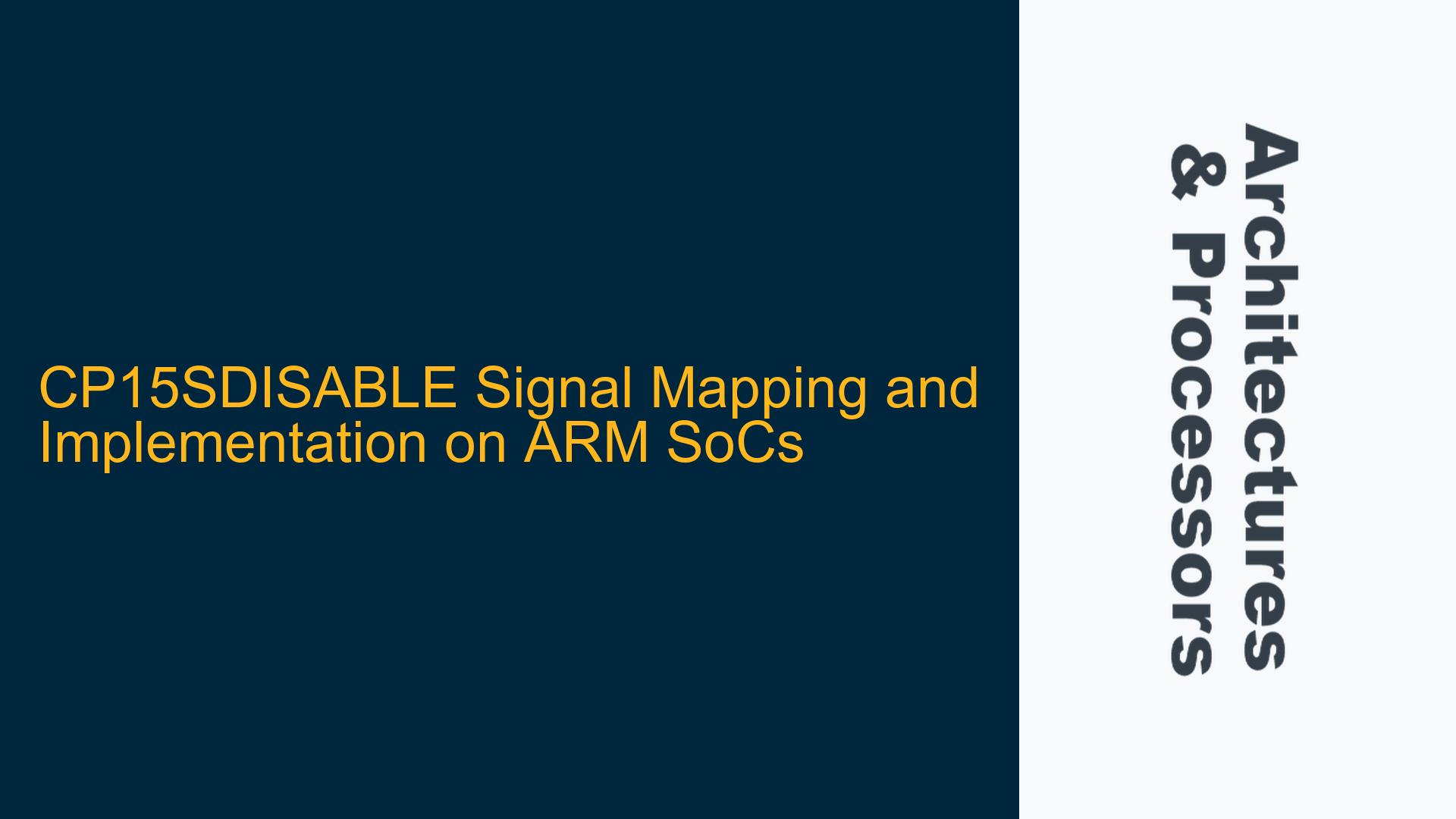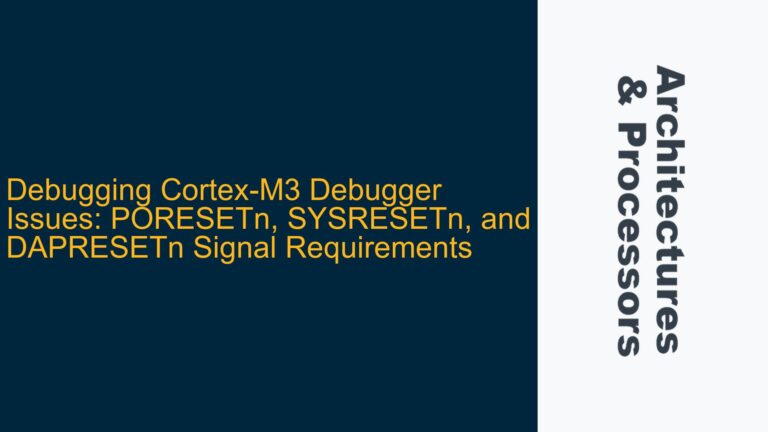CP15SDISABLE Signal: Core Functionality and SoC-Specific Implementation
The CP15SDISABLE signal is a critical input signal in ARM architectures, particularly in systems where secure and non-secure states are implemented. This signal is used to disable access to the CP15 system control coprocessor, which is responsible for managing critical system configurations such as memory management, cache control, and other system-level operations. The CP15SDISABLE signal is typically used in secure boot scenarios or in systems where certain privileged operations need to be restricted to prevent unauthorized access or modifications.
The CP15SDISABLE signal is a core input signal, meaning it is directly tied to the ARM processor core and is not typically exposed outside the System-on-Chip (SoC). This makes its implementation and accessibility highly dependent on the specific SoC design. In some SoCs, such as the ZYNQ 7000 series, the CP15SDISABLE signal can be controlled via a specific register within the SoC’s memory-mapped I/O space. This allows software running on the processor to enable or disable access to CP15 registers dynamically. However, in other SoCs like the i.MX6Q, the CP15SDISABLE signal is not exposed to the software layer, meaning it cannot be controlled or modified by the firmware or operating system.
The Raspberry Pi 2, which uses a Broadcom BCM2836 SoC, does not provide explicit documentation or registers for controlling the CP15SDISABLE signal. This lack of documentation makes it challenging for developers to determine whether the signal is implemented, how it is mapped, or how it can be accessed. The absence of this information in the Raspberry Pi documentation suggests that the CP15SDISABLE signal may either be hardwired to a specific state (e.g., always enabled or disabled) or not implemented at all in the BCM2836 SoC.
SoC-Specific Variations in CP15SDISABLE Signal Handling
The handling of the CP15SDISABLE signal varies significantly across different ARM-based SoCs, primarily due to differences in their design philosophies and intended use cases. For example, in the ZYNQ 7000 series, the CP15SDISABLE signal is mapped to a register in the SoC’s memory-mapped I/O space. This allows software to control the signal dynamically, enabling or disabling access to CP15 registers as needed. This flexibility is particularly useful in secure boot scenarios, where the firmware may need to restrict access to certain privileged operations during the boot process.
In contrast, the i.MX6Q SoC does not provide any mechanism for software to control the CP15SDISABLE signal. This could be due to the SoC’s design, which may prioritize simplicity or security by hardwiring the signal to a specific state. In such cases, the CP15SDISABLE signal is typically managed by the hardware itself, and software has no direct control over it. This approach simplifies the software design but may limit the flexibility of the system in certain scenarios.
The Raspberry Pi 2, with its BCM2836 SoC, presents a unique challenge due to the lack of documentation regarding the CP15SDISABLE signal. Without explicit information, it is difficult to determine whether the signal is implemented, how it is mapped, or how it can be accessed. This uncertainty can be problematic for developers who need to work with secure boot or other scenarios where access to CP15 registers must be controlled. In such cases, developers may need to rely on reverse engineering or experimentation to determine the behavior of the CP15SDISABLE signal on the Raspberry Pi 2.
Investigating and Resolving CP15SDISABLE Signal Issues on ARM SoCs
To address issues related to the CP15SDISABLE signal on ARM SoCs, developers must first determine whether the signal is implemented and how it is controlled in the specific SoC they are working with. This typically involves consulting the SoC’s technical reference manual (TRM) or other documentation to identify any registers or control mechanisms related to the CP15SDISABLE signal. If the documentation is unavailable or incomplete, developers may need to rely on other sources of information, such as community forums, reverse engineering, or experimentation.
For SoCs like the ZYNQ 7000, where the CP15SDISABLE signal is mapped to a register, developers can use software to control the signal dynamically. This involves writing to the appropriate register to enable or disable access to CP15 registers as needed. The specific register and bit fields used to control the CP15SDISABLE signal can typically be found in the SoC’s TRM. Developers should ensure that they follow the recommended sequence for enabling or disabling the signal, as improper handling could lead to system instability or security vulnerabilities.
In cases where the CP15SDISABLE signal is not exposed to software, such as in the i.MX6Q SoC, developers may need to rely on hardware-based solutions or workarounds. This could involve modifying the hardware design to expose the signal or using alternative methods to achieve the desired functionality. For example, if the goal is to restrict access to certain privileged operations, developers could use other security features provided by the SoC, such as TrustZone, to achieve a similar result.
For the Raspberry Pi 2, where the CP15SDISABLE signal is not documented, developers may need to resort to reverse engineering or experimentation to determine its behavior. This could involve analyzing the SoC’s boot process, examining the firmware, or using debugging tools to monitor the system’s behavior. In some cases, it may be possible to infer the behavior of the CP15SDISABLE signal by observing how the system responds to certain operations or by comparing it to similar SoCs where the signal is documented.
In summary, the CP15SDISABLE signal is a critical component of ARM-based systems, particularly in secure boot and other scenarios where access to privileged operations must be controlled. However, its implementation and accessibility vary significantly across different SoCs, making it essential for developers to understand the specific behavior of the signal in the SoC they are working with. By consulting the SoC’s documentation, using software-based control mechanisms, or resorting to reverse engineering and experimentation, developers can effectively address issues related to the CP15SDISABLE signal and ensure the proper functioning of their systems.






